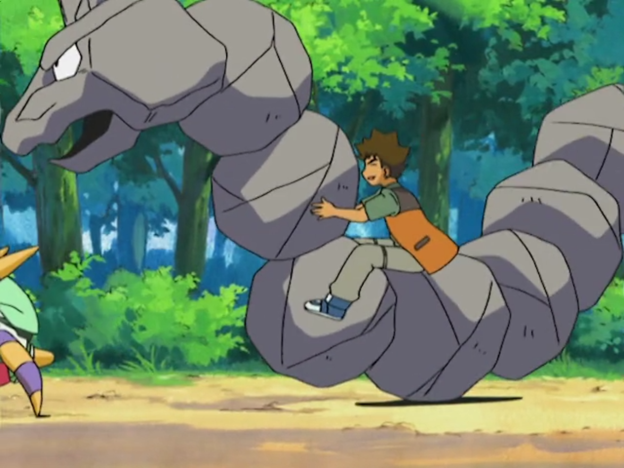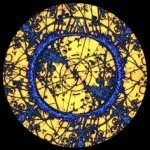What is Onix Made Of?

I was a fan of Pokémon for a very brief time as a kid, but it stopped the same summer it started. So, when a recent post went around about an Onix’s size compared to a Pokéball, courtesy of etracey99, I was a little interested in the subject. I began wondering, what exactly is this rock monster made out of?
The answer shocked me.
In order to do this, we need the density of the Pokémon. The first step is to find the volume of this behemoth. To do this, I gathered information such as that it is 28’ 1’’ in length. Now this is nice, but since it is made up of a series of boulders, I can’t easily calculate the volume like a cylinder. Instead, I made the assumption each part of the Pokémon was a uniform sphere. I know it is an estimate, but just remember it is an animated monster so please just relax.
Anyways, from the picture above, some string, and some guess work, I calculated the diameter of a single bolder to be the length of Brock’s leg. His height is never given, so, knowing that the average height for a 15 year old is 5’ 7’’, it can be estimated that the diameter of a single rock is 33.5 inches.
From there the length of the Onix at 28’ 1’’ can be converted to 337’’, and divided by 33.5’ to give us a rounded 10 whole boulders which make up the body. The volume of a single boulder is 19,684.89 in^3, so, multiplying by ten for each bolder results in a total volume of 196,848.9 in^3. This seems like a lot, but when translated to metric it results in 3.22577 m^3.
Now, as for the mass, we can get this information from the official Bulbapedia which etracey99 used to gain his information. The mass is 210kg, which seems very low, but I used it in my calculations anyways.
The calculation for density is mass/volume so plugging in (210kg)/(3.22577m^3) resulted in a density of 65.1 kg/m^3 . Now came the time to look it up, and the results shocked me. The closest values it came to were sawdust (64.1 kg/m^3), carbon black powder (64.1 kg/m^3), peanut shell refuse (64.1 kg/m^3), and talcum powder (64.1 kg/m^3).

So there you have it, the rock Pokémon made out of BABY POWDER!!! The science doesn’t really give any closure here. It just proves that things are not always what they seem, but then again, I’m a student trying to rationalize a rock monster.
As always, thanks for reading! –ThePeculiarParticle



3 Comments
Recommended Comments